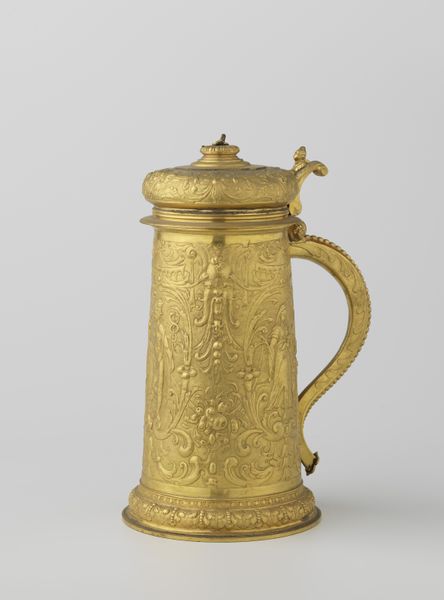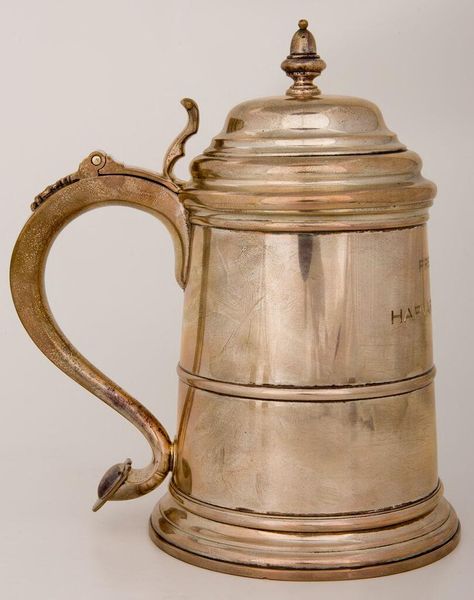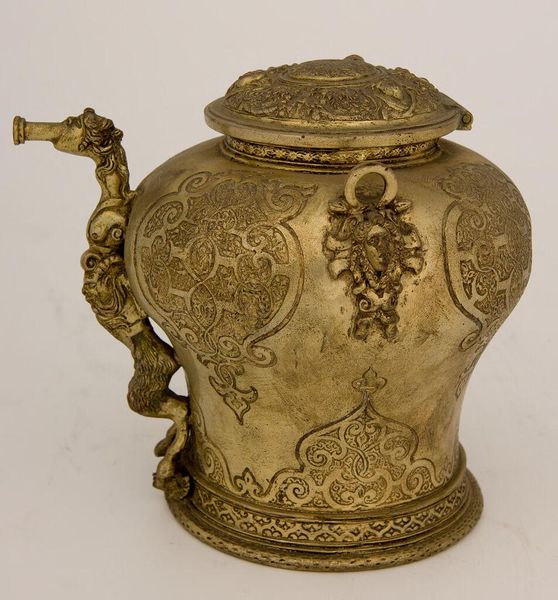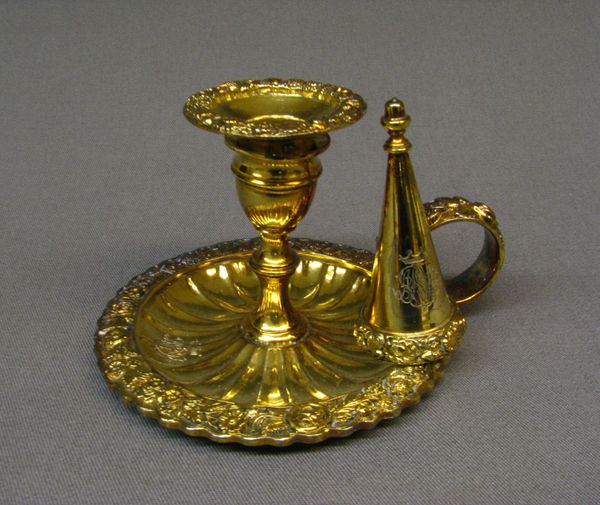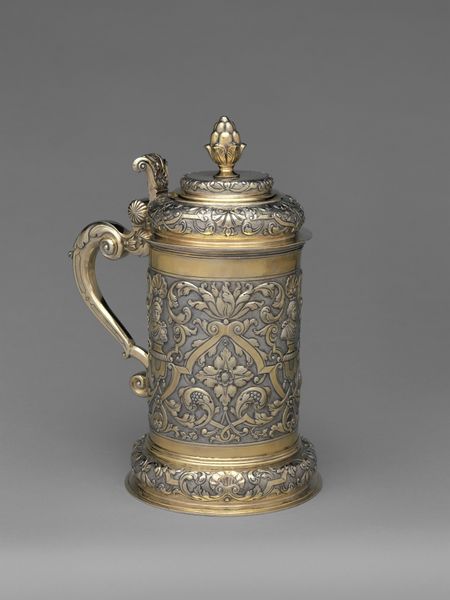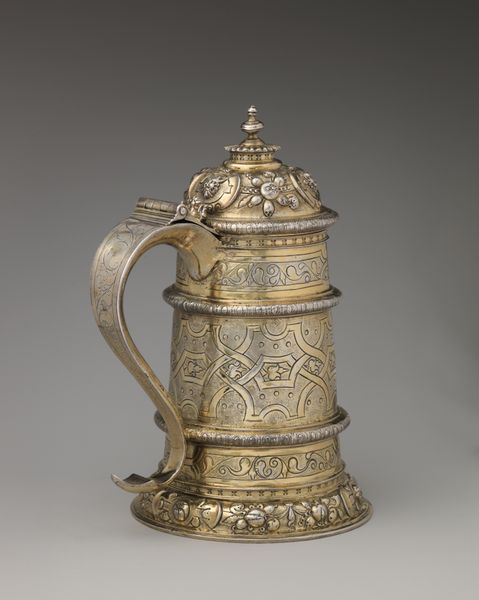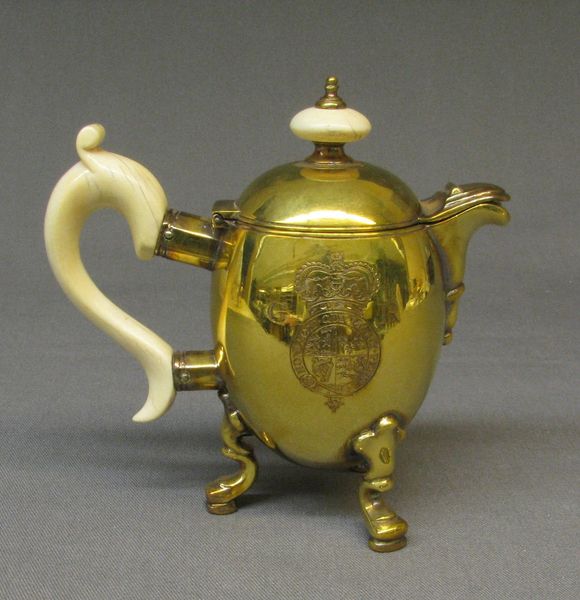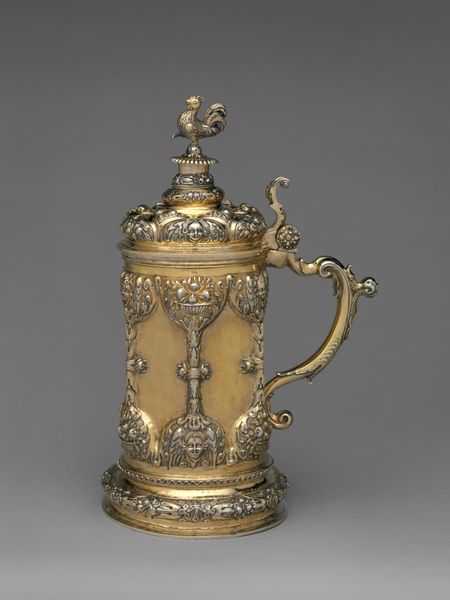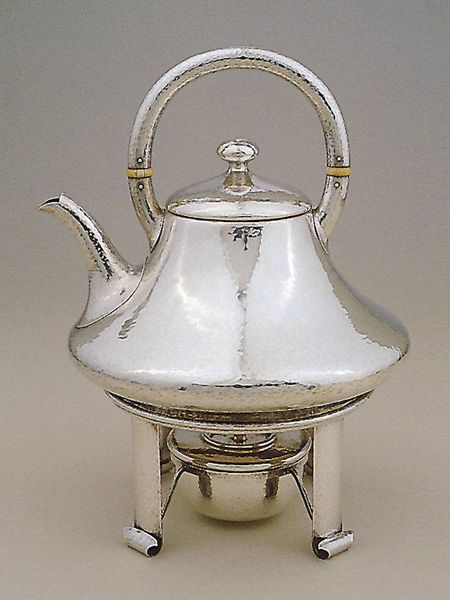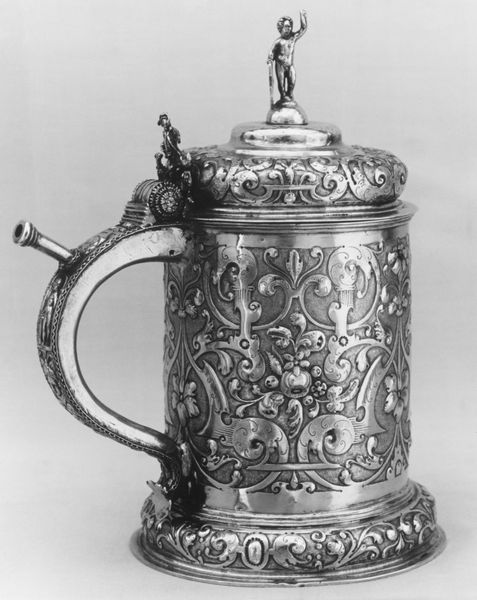
Dimensions: Height: 7 1/2 in. (19.1 cm)
Copyright: Public Domain
Curator: At the Metropolitan Museum of Art, we have on display an extraordinary tankard with a cover, crafted during the 19th century by Elkington & Co. Editor: Good heavens, what an ostentatious thing! It's intensely golden; the craftsmanship overwhelms the form. It is like pure decoration, overwhelming the idea of functionality. Curator: Indeed! Consider the intricate details: the brass metalwork shaped into relief sculpture, embodying the spirit of the baroque era. Look at the sculpted handle, flowing lines, and densely ornamented cover. The artist really used all the tools to push and pull, shaping what one may consume. Editor: True, I see that its design is steeped in history, harking back to the decorative excesses favored by European aristocracy. These tankards were a mark of status. To possess such a gold piece was a statement about a family’s cultural capital, but in a nineteenth-century context, is this design an honest continuation of Baroque aesthetics, or a reference to something entirely new? Curator: That is something to think about. From a formal perspective, one might say the relief work captures a lively interplay of light and shadow. Semiotically speaking, the material choice — the color of gold — points to themes of wealth and opulence. The tankard practically screams success and accomplishment. Editor: Yes, the political imagery—intentional or otherwise—raises some critical questions. How did these kinds of forms serve elite identities? Why return to it? Curator: Well, I am grateful to have witnessed this meeting of historical echo with contemporary skill and insight. Editor: Me too. Now I better understand its appeal, both then and now, not only from what is included, but also, now, the politics.
Comments
No comments
Be the first to comment and join the conversation on the ultimate creative platform.
